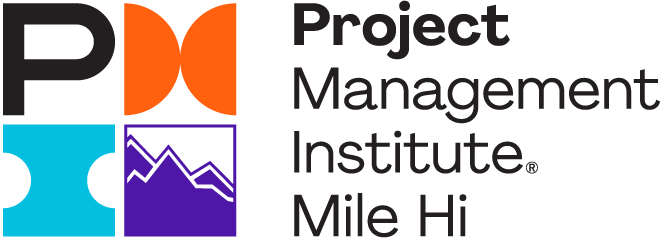26 February 2018 at 12:00AM
5 Ways Project Managers Can Use Humor to Get Better Results
When I first started working as an IT Project Manager at Procter & Gamble, I thought I had all of the skills I needed to be successful. I had a degree in Computer Science & Engineering so I could understand all of the technical aspects; I had studied up on things like scope, budget, time, and resource allocation; and I knew all of the acronyms like NPV, COB, and LOL.
And then I started working and realized that I didn’t have great skill in managing the most challenging of all resources: humans. As an engineer, I had always been obsessed with efficiency (for example, I believe efficiency should be a one syllable word), but quickly learned you can’t be efficient with humans. They have “emotions” and “feelings” and get “sick” and “tired” and have to “eat” and “sleep.” Instead of being efficient, you have to be effective.
Over time, I learned there is one really effective tool for engaging with humans: humor. So, here are five ways project managers can use humor to get better results.
1. Create Interesting Subject Lines
The average person sends and receives 112 emails per day, so if you want someone to actually open your email, you have to give them a compelling reason to do so. One way to do that is to use a little incongruity to help your email subject line stand out from all of the others sitting in your team's inbox.
For example, one of my first teams at P&G was comprised of a few Trekkies, so I decided to have fun with my weekly status emails. Instead of using a standard subject line like Project X Weekly Status Update - February 10, I decided to use Project X PM Log Stardate 47634.44 [2/10]. (Yes, I would actually calculate the stardate). I heard from multiple Star Trek fans from my team that every time they saw my email, they couldn’t help but smirk like Kirk.
It was a simple way to get people a fraction more excited to see my email.
2. Reward Readers at the End of Long Emails
Along the lines of email, another way to encourage people to read the electronic mail you’ve sent them is to reward their diligence with something at the end of the message. It can be a quotation, a link to a humorous video, or, my favorite, puns.
During one particularly challenging integration project I was leading, I had to send out a long multi-project update every two weeks to the entire sales team. It covered a lot of detail but was necessary for updating the entire group as to where we were. At the end of each update, I started including puns I would make up based on the primary topic of the email.
I found that people started replying back to these updates. Not to ask questions about the project, but mostly to tell me how good, or more often, how bad, these custom puns were. While I would have preferred they thought the jokes were the funniest thing they’d ever read, any comment meant they were actually reading the emails (or at least opening them and scrolling to the bottom).
Adding a small humor thank you is an easy way to reward people for reading your messages.
3. Use Meetings to Get to Know People
One of the disadvantages of labeling people as resources is that sometimes that's all we think of them as. We forget that people on the other side of an email or other side of a conference desk is a fellow human being with human emotions. When we get to know each other as humans and build stronger relationships, we create more engagement and positivity in our teams. One easy way to do that is to either start or end each team meeting by having everyone answer a question.
These questions don't have to be crazy personal or wacky, just something to get people to share a little more about their human side. Some of the most popular questions I still use with include:
- What's the first thing you remember buying with your own money?
- What's been your proudest moment of this past year?
- What story does your family always tell about you?
It's amazing how simple questions can strengthen a team's dynamic.
4. Pep Up Your Presentations with Pictures

We all know about the dreaded death by PowerPoint: presentations where someone reads slides to you as if it's the worst audiobook you've ever heard. And yet, when it comes to our own presentations, we often fall into the same trap because it's easier to write out a script of what to say than actually memorize key points and speak to them.
But just because we can make slides full of text doesn't mean we should. It may be efficient, but it’s not effective. Instead, take advantage of doing a presentation by including images and graphics. This will keep people more engaged and likely improve their recall of the material.
One of my favorite ways to do this is to find ways to sneak a picture of myself into every presentation I do. Not because I'm narcissistic, but because I've always wanted to be more like Alfred Hitchcock. Sometimes the pictures of me are obvious, other times it’s just a silhouette in the background. It got to the point with one team that it became a game to be the first person to spot me in the presentation.
Bonus note: If you don't want to use your own photos, one easy way to find compelling pictures is to go to Flickr, set a filter for Creative Common images, and type in the theme of your presentation. You'll get results for hundreds of images you can readily use (just make sure to give proper credit) that are way better than 10 bullet points on a slide. The image above is one I use in my presentations when talking about the power of a smile.
5. Improve Understanding with Analogies
Sometimes as PMs, we have to explain complex (and often dry) subjects to a range of people. Getting into the details isn’t always exciting and can be confusing for some of our resources. One way to get around this and actually improve team understanding is by creating metaphors and analogies for our subject.
One summer at P&G, I was tasked with taking a 3-day PM course and distilling it down into a 3-hour lesson that we gave to our interns. In order to frame the entire training, I decided to find a metaphor that I could come back to that would explain the terms. Eventually, I settled on a wedding:
Project Management is a lot like getting married. There’s a project initiation (proposal), a project charter (vows), stakeholders (parents), and about 50% of both don’t end up working out…
This analogy worked because we learn new concepts by relating them to concepts we already know. By relating to a wedding, something everyone knows at least a little about, I added humor throughout the program and the interns had a clear framework to go back to when trying to understand the various stages of a project.
More Fun = Better Results
There are countless other ways Project Managers can get better results by having more fun. And the more humor you use (so long as it has a specific purpose and you are still getting your work done), the more impact you can have.
One thing you might have noticed in these examples is the value of consistently using humor. Once your emails are known to include a bit of humor, people actually read them. Once your meetings have elements of fun, people actually come to them. Once people realize they’ll have enjoy working on your projects, they’ll want to join your team.
Have any examples of how you’ve used humor at work? Share them in the comments!
About the Author
Andrew Tarvin is the world’s leading humor engineer. He is the founder of Humor That Works, a consultancy in human effectiveness that provides training in human skills. Prior to starting Humor That Works, he was a top-rated project manager at Procter & Gamble, leading multi-million dollar projects for a $350 million business. For questions or comments, reach out here or learn more at https://www.humorthatworks.com.
Image credits:
Humor that Works by FunnyBizz SF
Smiling Dog by Allen Skyy, CC by 4.0, https://creativecommons.org/licenses/by/4.0/



